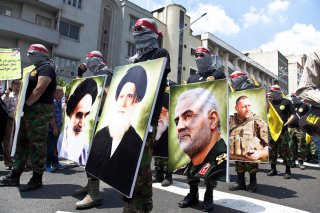What’s in It for Iran?
Although there is no direct evidence of Iran’s involvement in the recent Hamas attacks, Tehran has definite interests in humbling Israel. However, it has less interest in a wider war.
Finally, the balance of military power is particularly disadvantageous for Iran in terms of conventional military capabilities. Iran’s army can count on several hundred thousand combatants but does not have the high-tech military equipment to support their deployment. Unlike the Iranians, the Israelis have access to the latest military technology but, for various reasons, do not have the means or legitimacy required to deploy an expeditionary force on a regional scale. Aware of this situation and the advantages that can be gained from it, Iran will, therefore, do everything to avoid confrontation by continuing to rely on a hybrid and asymmetric approach below the threshold of direct violence. For all the reasons above, an open war of a conventional type between the Islamic Republic and its regional adversaries, although possible, remains unlikely.
Toward high-intensity psychological warfare
Among Iran’s many benefits from its collaboration with Hamas, the first is to derail the normalization process between the petro-monarchies and Israel. Even the most pragmatic Arab capitals today denounce the bombings of the civilian populations of Gaza while calling for a pause in the rapprochement with the Jewish state. Indirectly, the crisis born from the October 7 attack also allowed Iran to deepen the geopolitical gap between Western countries and, on the other hand, China, Russia, and emerging countries.
Another benefit Iran derives from the current crisis is establishing its status as the “champion of the Arab street” in the region. Furthermore, Hamas’s land invasion of southern Israel has helped Tehran strengthen the so-called “axis” of resistance to the Jewish state. Finally, Hamas’ attack under the noses of Mossad and the Shin Bet allows Iran to question Israel’s technological invincibility and military supremacy. Ismail Haniyeh and his Iranian sponsors did not hold back from mocking the Hebrew State as “incapable of protecting itself.”
Sticking to their trademark asymmetrical approach, Mullahs and Revolutionary Guards will continue to rely on their powerful propaganda apparatus to exploit Israel’s “humiliation” to restore the image of the Islamic regime heavily tarnished by the recent veil uprising. Generally speaking, Iranian leaders will be playing, as during the 33-day war in the summer of 2006, the psychological card to promote a reconfiguration of the regional game to their advantage —even if, in doing so, they also know that they are playing with fire.
Pierre Pahlavi is a full professor at the Royal Military College of Canada in the Department of Defence Studies, co-located with the Canadian Forces College, Canada’s Staff and War College. His research focuses on Iran and its asymmetric strategies, public diplomacy, and the use of force in the international system. He has published in various journals in strategic and security studies. He has recently published a book on the Iranian revolution, Le Marécage des Ayatollahs, prized by the Académie Française. He has a PhD in political science from McGill University.
Image: Shutterstock.

